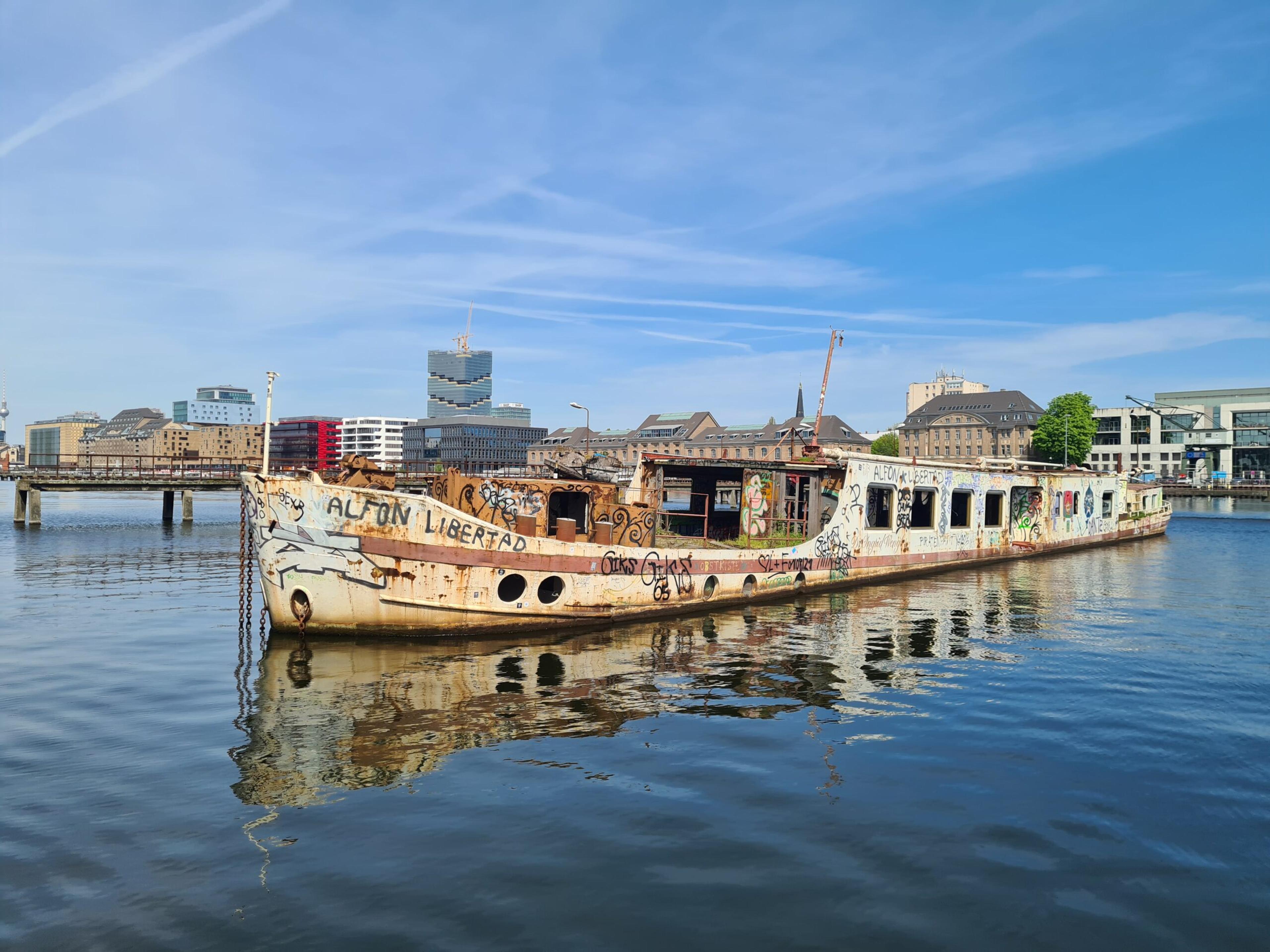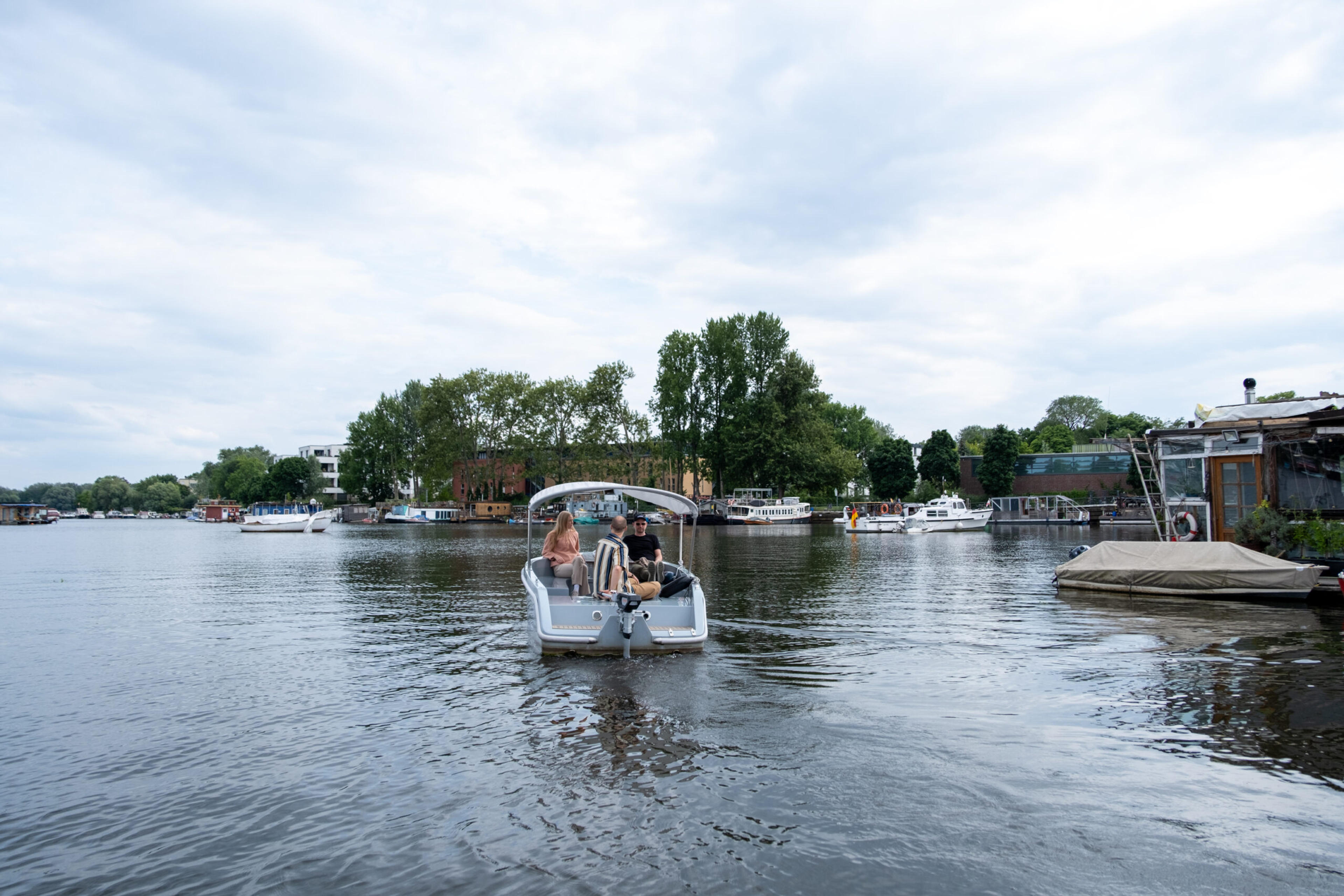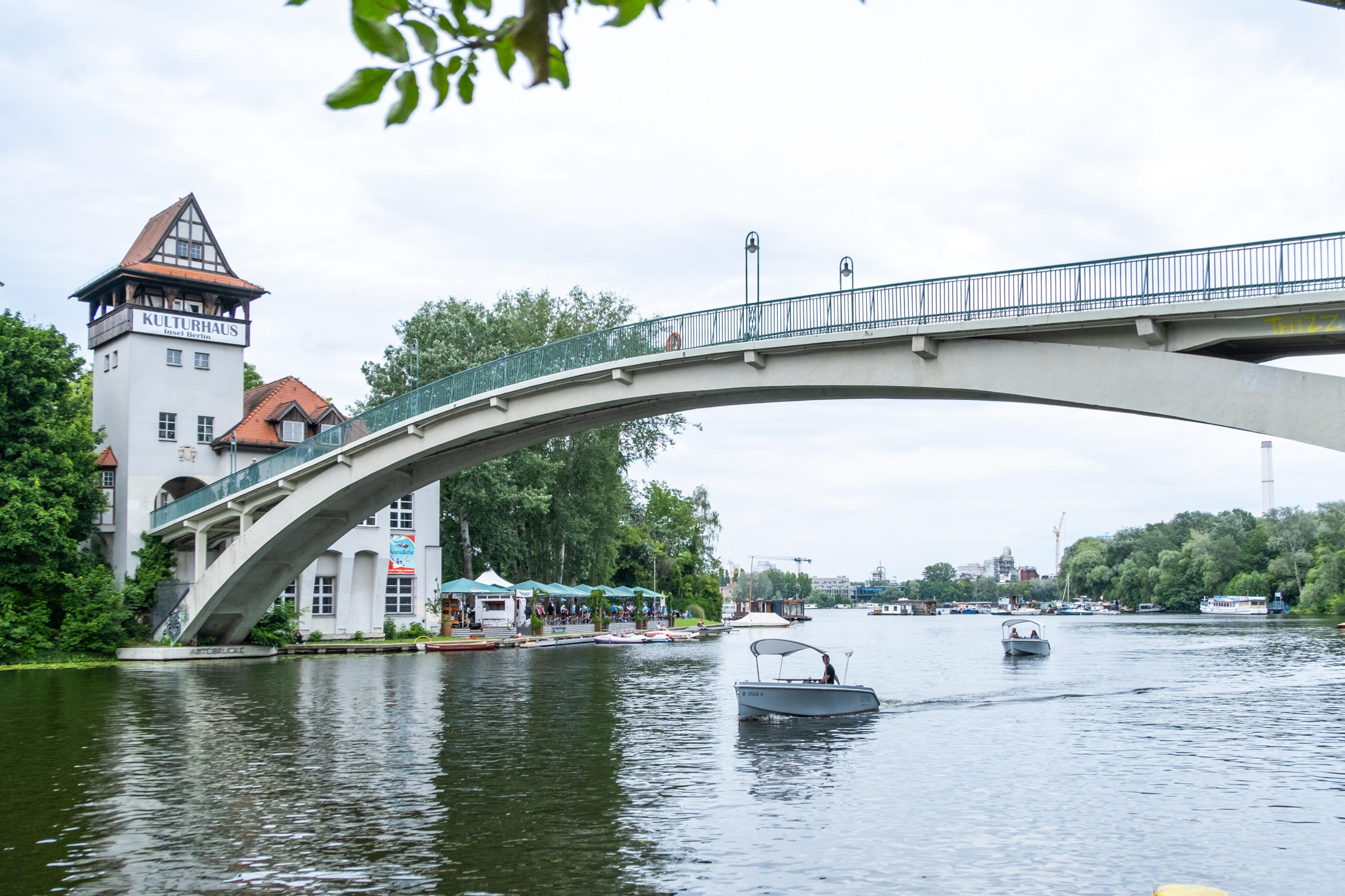


Oberbaum Brücke: The Oberbaum Bridge (Oberbaumbrücke) is one of Berlin’s most iconic landmarks. Spanning the River Spree, it connects the districts of Friedrichshain and Kreuzberg. Originally built in the late 19th century, the bridge features striking Gothic-style towers and was once a border crossing between East and West Berlin during the Cold War. Today, it serves both pedestrians and traffic, including the U-Bahn line U1. The Oberbaum Bridge is not only a functional piece of infrastructure but also a symbol of Berlin’s unity and vibrant history.
Foto: Mikkel Nyman
Photo: Mikkel Nyman
Oberbaum Brücke: The Oberbaum Bridge (Oberbaumbrücke) is one of Berlin’s most iconic landmarks. Spanning the River Spree, it connects the districts of Friedrichshain and Kreuzberg. Originally built in the late 19th century, the bridge features striking Gothic-style towers and was once a border crossing between East and West Berlin during the Cold War. Today, it serves both pedestrians and traffic, including the U-Bahn line U1. The Oberbaum Bridge is not only a functional piece of infrastructure but also a symbol of Berlin’s unity and vibrant history.
1/3

Molecule Man is a striking sculpture by American artist Jonathan Borofsky, located in the River Spree in Berlin. Standing 30 meters tall, it features three human figures made of aluminum, leaning into each other with holes throughout their bodies, symbolizing the molecules that connect all human beings. Installed in 1999, the artwork represents unity and the intersection of Berlin’s three districts: Treptow, Kreuzberg, and Friedrichshain.
Foto: Mikkel Nyman
Photo: Mikkel Nyman
Molecule Man is a striking sculpture by American artist Jonathan Borofsky, located in the River Spree in Berlin. Standing 30 meters tall, it features three human figures made of aluminum, leaning into each other with holes throughout their bodies, symbolizing the molecules that connect all human beings. Installed in 1999, the artwork represents unity and the intersection of Berlin’s three districts: Treptow, Kreuzberg, and Friedrichshain.
2/3

The sunken ship near Berlin’s East Side Gallery, is an abandoned and partially submerged barge that has become a mysterious urban landmark. Covered in graffiti and surrounded by street art, it reflects Berlin’s raw, artistic spirit and history of transformation. Though not officially recognized as a monument, the ship has become a popular photo spot and symbol of the city's ever-evolving identity.
Foto: Signe Greiner
Photo: Signe Greiner
The sunken ship near Berlin’s East Side Gallery, is an abandoned and partially submerged barge that has become a mysterious urban landmark. Covered in graffiti and surrounded by street art, it reflects Berlin’s raw, artistic spirit and history of transformation. Though not officially recognized as a monument, the ship has become a popular photo spot and symbol of the city's ever-evolving identity.
3/3



Insel der Jugend, or “Island of Youth,” is a small island on the River Spree in Berlin, connected to the mainland by the historic Abbey Bridge (Abteibrücke). Once used as a youth recreation site, the island now hosts cultural events, concerts, and open-air gatherings. Surrounded by greenery and water, it offers a peaceful escape in the heart of the city, blending nature, history, and creativity.
Foto: Mikkel Nyman
Photo: Mikkel Nyman
Insel der Jugend, or “Island of Youth,” is a small island on the River Spree in Berlin, connected to the mainland by the historic Abbey Bridge (Abteibrücke). Once used as a youth recreation site, the island now hosts cultural events, concerts, and open-air gatherings. Surrounded by greenery and water, it offers a peaceful escape in the heart of the city, blending nature, history, and creativity.
1/4

Funkhaus is a historic broadcasting complex located on the banks of the River Spree in Berlin. Built in the 1950s in East Germany, it once served as the headquarters for GDR radio. Today, Funkhaus is a unique blend of vintage architecture and modern creativity, housing recording studios, event spaces, and cultural events. Known for its exceptional acoustics and retro charm, it has become a favorite spot for artists, musicians, and creatives from around the world.
Foto: Mikkel Nyman
Photo: Mikkel Nyman
Funkhaus is a historic broadcasting complex located on the banks of the River Spree in Berlin. Built in the 1950s in East Germany, it once served as the headquarters for GDR radio. Today, Funkhaus is a unique blend of vintage architecture and modern creativity, housing recording studios, event spaces, and cultural events. Known for its exceptional acoustics and retro charm, it has become a favorite spot for artists, musicians, and creatives from around the world.
2/4

Rummelsburger Bucht is a bay on the River Spree, located in the eastern part of Berlin. Known for its picturesque views and tranquil atmosphere, it has become a popular spot for locals to relax, walk, and enjoy the water. The area, once industrial, has transformed into a vibrant residential and recreational space. With its beautiful parkland and proximity to the city, Rummelsburger Bucht offers a peaceful retreat in the heart of Berlin.
Foto: Signe Greiner
Photo: Signe Greiner
Rummelsburger Bucht is a bay on the River Spree, located in the eastern part of Berlin. Known for its picturesque views and tranquil atmosphere, it has become a popular spot for locals to relax, walk, and enjoy the water. The area, once industrial, has transformed into a vibrant residential and recreational space. With its beautiful parkland and proximity to the city, Rummelsburger Bucht offers a peaceful retreat in the heart of Berlin.
3/4

Treptower Bridge (Treptower Brücke) is a historic bridge spanning the River Spree in Berlin. Connecting the districts of Treptow and Neukölln, it was originally built in the late 19th century and later renovated in the 20th century. The bridge is known for its distinctive design, featuring steel arches and a charming industrial aesthetic. It provides both vehicle and pedestrian access, offering scenic views of the river and surrounding areas, making it a notable landmark in the city.
Treptower Bridge (Treptower Brücke) is a historic bridge spanning the River Spree in Berlin. Connecting the districts of Treptow and Neukölln, it was originally built in the late 19th century and later renovated in the 20th century. The bridge is known for its distinctive design, featuring steel arches and a charming industrial aesthetic. It provides both vehicle and pedestrian access, offering scenic views of the river and surrounding areas, making it a notable landmark in the city.
4/4



Minna-Todenhagen-Brücke is a bridge spanning the River Spree in Berlin, connecting the districts of Treptow and Neukölln. The bridge, named after Minna Todenhagen, a notable figure in the city's history, was built in the early 20th century. Known for its elegant design, it provides both pedestrian and vehicle access. The bridge offers a peaceful crossing with scenic views of the river and surrounding greenery, contributing to the urban landscape of Berlin.
Foto: Lærke Andersson
Photo: Lærke Andersson
Minna-Todenhagen-Brücke is a bridge spanning the River Spree in Berlin, connecting the districts of Treptow and Neukölln. The bridge, named after Minna Todenhagen, a notable figure in the city's history, was built in the early 20th century. Known for its elegant design, it provides both pedestrian and vehicle access. The bridge offers a peaceful crossing with scenic views of the river and surrounding greenery, contributing to the urban landscape of Berlin.
1/3
2/3
3/3